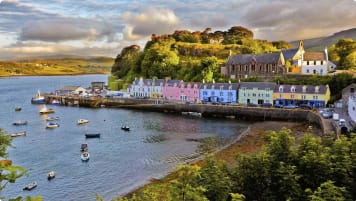Islands of the Outer Hebrides: The Definitive Guide for Travellers
Scotland's Outer Hebrides are discussed in this article to assist the mature solo and couple in planning to visit Scotland and the British isles on a small group tour.
8 Aug 21 · 10 mins read
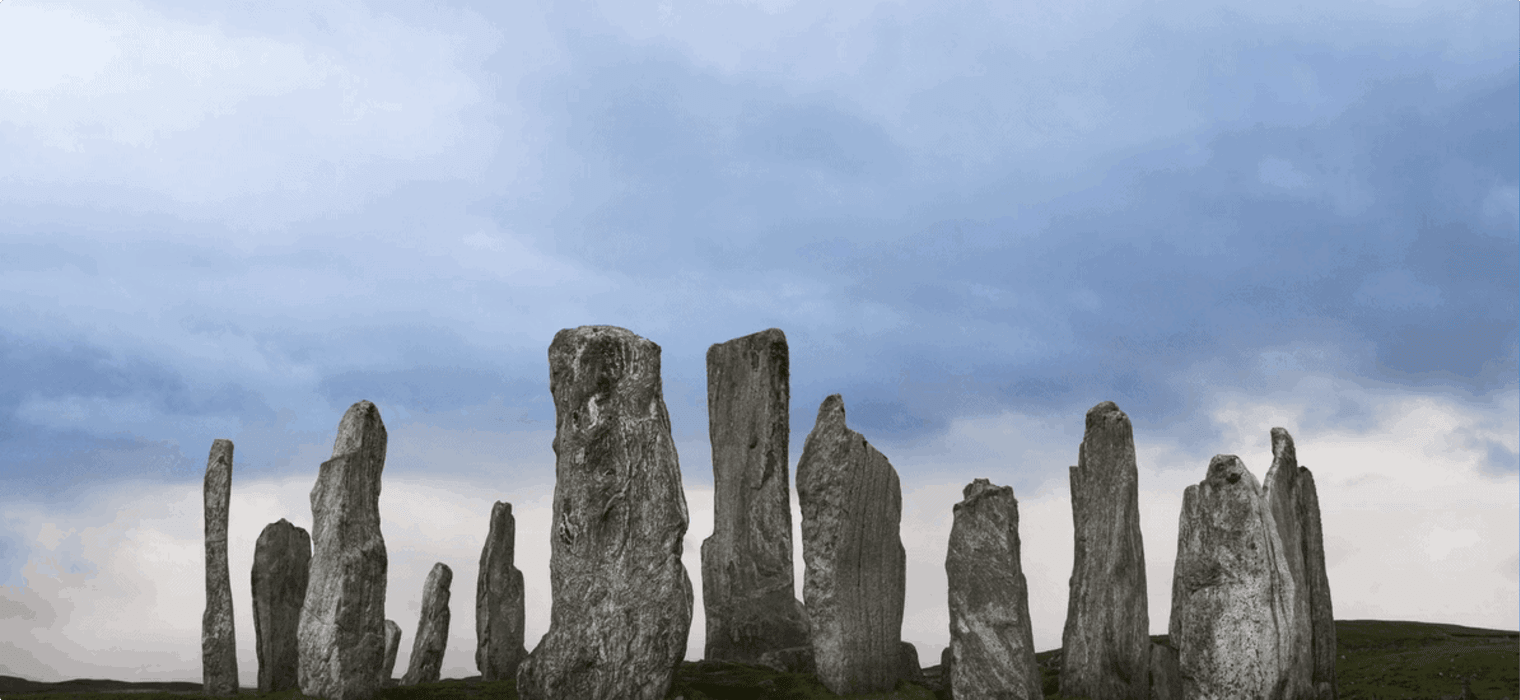
Islands of the Outer Hebrides
An article that shares some the culture, people and history of the key islands on the Western side of Scotland.
The Outer Hebrides
The name Hebrides is derived from the Norse word Havbredey, meaning the ‘isle on the edge of the sea’. This crescent-shaped archipelago lies around 40 miles off the north-west of mainland Scotland, its west coast pounded by the unbroken force of the North Atlantic. There are roughly 200 islands in this group, making up an area of 716,000 acres. Just 13 of these are inhabited, with about 80% of the population based in Lewis and Harris. These two communities are the focus of this article, which traces the human history of a far-flung and unique part of the world.
As you tour, history is typically close by with- Kisimul Castle
- Amhuinnsuidhe castle
- Elean donan castle
- Donan castle
all awaiting to be explored
A Gaelic stronghold
Lewis and Harris lie to the north of the Outer Hebrides, with North and South Uist, Benbecula and Barra, along with other smaller islands, to the south. While the southern islands reached their peak of population in 1841, comparable to the rest of the islands of Scotland, Lewis and Harris were unique. 35,000 people occupied these isles at their peak in 1911 thanks to exceptional herring fishing. Since then, clearance and emigration have drastically reduced the livelihoods here, but not the culture. Today the Outer Hebrides is the last stronghold of the Gaelic language and lifestyle.
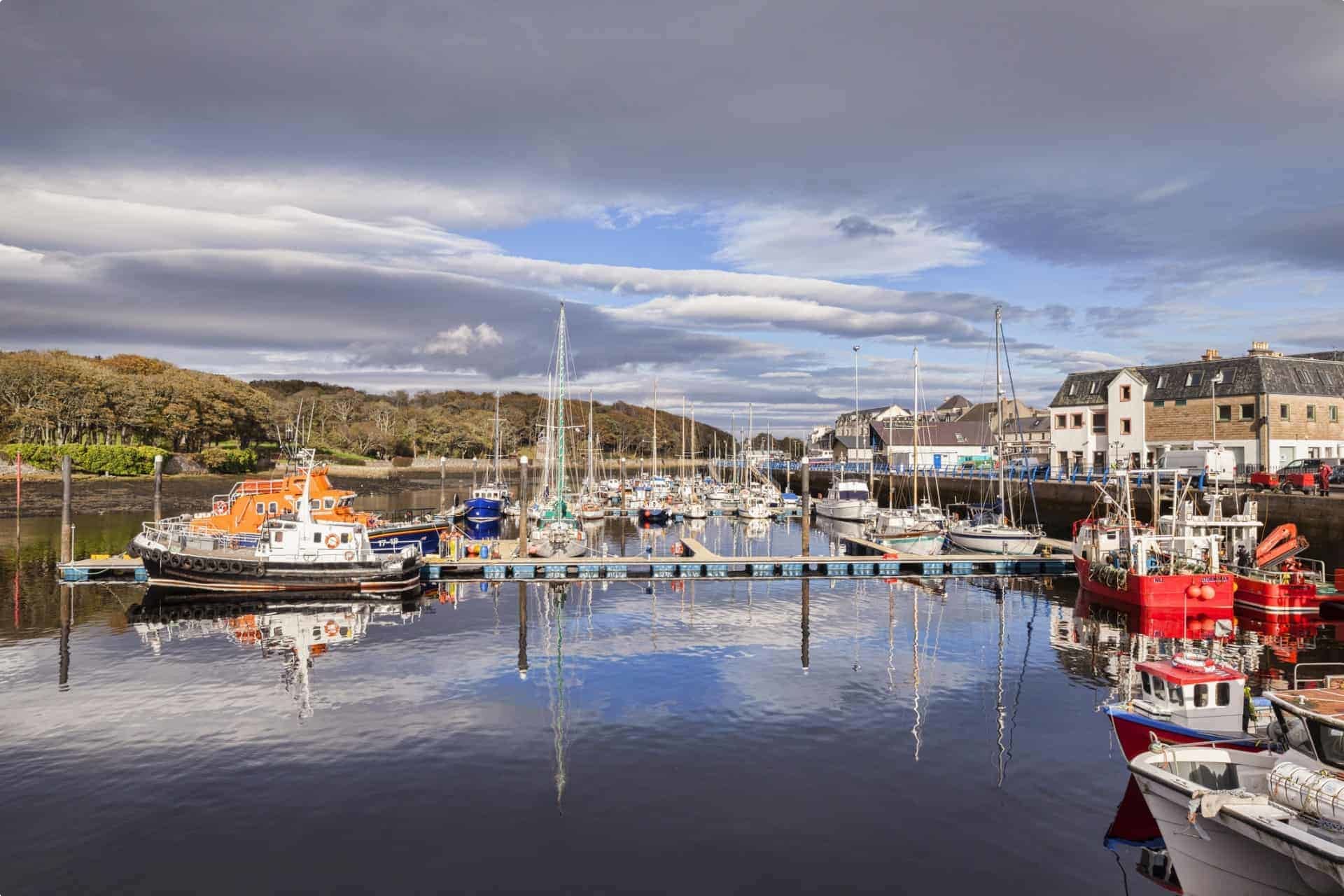
A diverse community
Lewis, Harris, and North Uist are Protestant, belonging in the main to the free Presbyterian Church. Here, the Sabbath is strictly observed with bars, shops and restaurants closed on Sundays. One exception is the Storehouse Cafe at Lews Castle, where you can find hot lunches or afternoon tea. South Uist and Barra are Roman Catholic, while Benbecular is a mixture of the two. There is no friction between the religious communities; in fact the impenetrable geography of the South of Harris means North Uist has more contact with its Roman Catholic neighbours than with Lewis and Harris. And while tourist infrastructure is limited, locals welcome visitors with open arms. It means experiences here are authentic and memorable, as you get a taste of life here when visiting Outer Hebrides.
Travel to the Outer Hebrides
Most visitors to the Outer Hebrides approach from the east, met by rocky, glaciated valleys and seemingly barren lands. Approach from the west, however, and you will find pristine beautiful hebridean white sandy beaches with crystal clear water to rival any in Europe. You would be forgiven for mistaking the seaside views on offer for something out of the Caribbean. Cute cottages dot the fertile grassland, grazing cattle completing the picture of rural idyll. These vast extremes are separated by peat moor teeming with biodiversity and wildlife: more than meets the eye. The Outer Hebrides is a place where people come to escape it all and find themselves welcomed by a warm and unique community living off the land. It is a destination full of natural wonders where one can enjoy coastal scenery and otherworldly landscapes.

Isle of Lewis
Lewis is the largest and most populated island of the Outer Hebrides. The name is derived from the Gaelic leogach (pronounced loo-ach), meaning marshy. It refers to the dark and undulating peat that distinguishes Lewis and its evocative landscape. Peat extends across the mountains and moorlands, the distinctive herringbone pattern in the surface a result of historic crofting techniques.
Crofting the peat
The main industries sustaining Lewis are weaving, fishing, tourism, and crofting; the latter referring to the practice of farming small, arable units of tenured land. The peat here is a rich natural resource. It began to form when Neolithic farmers cleared the indigenous woodland, destroying the natural drainage system in the process. As a result, water that once would have been absorbed and processed by trees now collected on the poor-quality soil. Sedge, moss, grass and heather thrived in these damp and acidic conditions. They outstripped the rate at which dead plant material could decompose. So, a layer of peat formed of these fibrous plant remains. In Lewis, the peat is made up of sphagnum and deergrass and on some parts of the moor, is still in the process of forming.
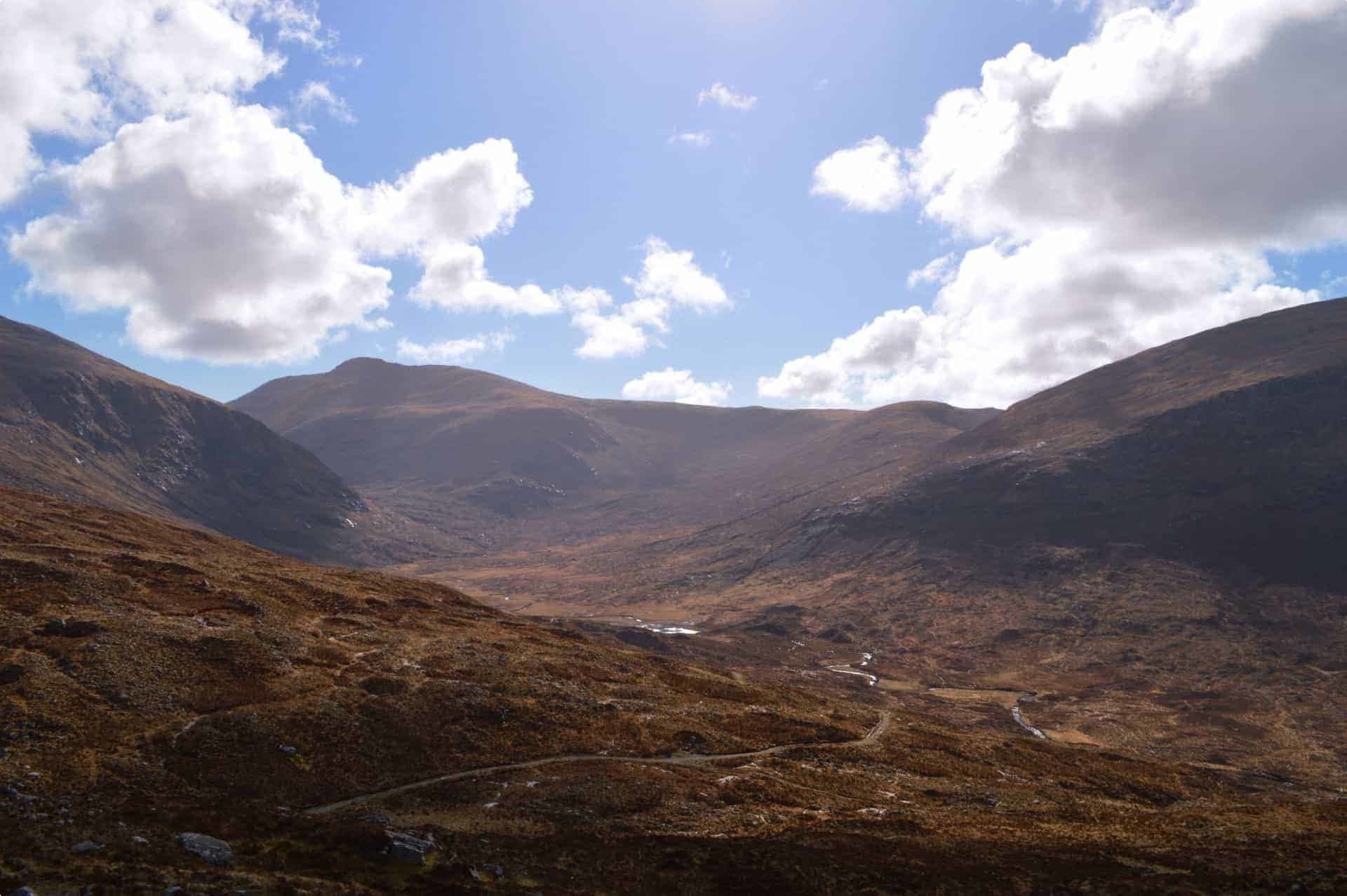
Cruach–mhona
An estimated 85 million tonnes of peat reserve can be found on Lewis – a substance that, in its natural form, is up to 90% water. The deeper, black layers of peat make fine fuel, and workers cut up to 1000 units per day using traditional methods. Cut peat must be drained, dried, and transported. Units are neatly stacked in cruach–mhona (peat-stacks) by hardworking crofting families: these ubiquitous structures are a local symbol of labour, resourcefulness and pride.
Tending the moors
It was from the townships of Barvas on Lewis that the idea of reseeding the barren moorland spread. The surface of the moor is skimmed, then shell sand, nutrients and fertiliser are added. Seeds are sown into this rich mixture, and worms and bacteria applied to turn it into soil. This technique has improved many thousands of acres of land on Lewis, making it available for grazing. Where this fertile land abuts the moorland’s edge, a dramatic contrast can be seen.
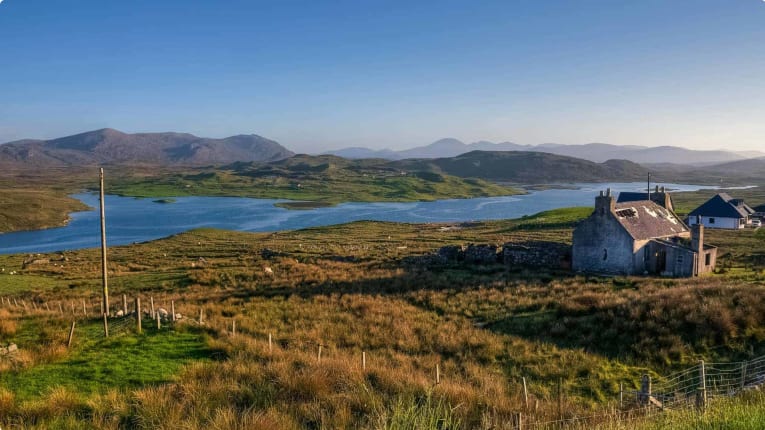
A land of proud tradition
Inhabitants of Lewis are proud and protective of their traditions, some of which are fiercely guarded from change. A unique 1980 referendum was held in Barvas to determine whether the community wanted a licensed premise. This idea was thrown out and drinking continues in bothans, shacks on common ground that are tolerated by police. Visitors are not welcome.
Stornoway
Elsewhere, however, such as the town of Stornoway, travellers will find a cosmopolitan and welcoming community with shops, restaurants and accommodation. Stornoway is Lewis’s administrative capital and largest township. With a local population of 8000 people, it is home to the island’s airport a busy seaport and ferry terminal. In Stornoway the soft smell of peat travels on the air, as breezes blow in across the minch onto the hustle and bustle at the water’s edge. Local fishermen unload their catches to be transferred to the town’s smokehouses. Galleries celebrate community art. And many a walker passes through Stornoway, edged by picturesque woodlands for the nature lovers. More information on Stornoway can be found here.
Lews Castle
This Victorian era castle is located west of Stornoway on Lewis, and set within attractive grounds. It was built in 1844-51 for Sir James Matheson, a Scottish trader who earned a fortune in the Chinese Opium trade and purchased the whole island. English industrialist and philanthropist Lord Leverhulme bought the castle from the Lewis family in 1918; and in 1923, he gave the castle to the people of Stornoway parish. Since then, it has served different purposes. During the Second World War it accommodated a Naval air squadron. Afterwards, in the 1950s, students of Lew Castle College moved in. It was left disused for several decades after this accommodation was shut down. The category A listed building was awarded 4.6 million pounds by the Heritage Lottery Fund in 2011, and converted to a museum and cultural centre. In 2016, the ground floor was opened to the public, including a café and restored ballroom. And in 2017, luxury apartments became available to holidaying guests.
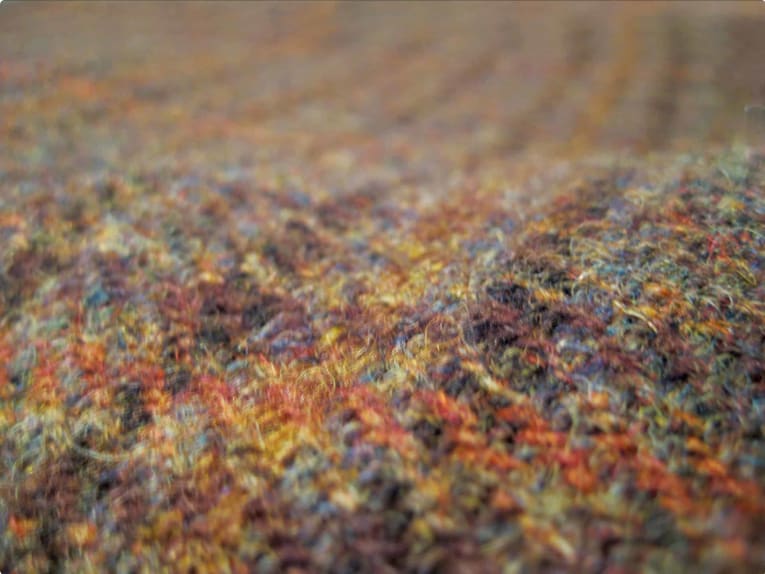
World-famous Harris Tweed
Another tradition in Lewis is the famous Harris Tweed. Though it takes its name from its neighbour, Lewis is the centre of production. Harris Tweed must be made from virgin Scottish wool that is woven by hand in the homes of local weavers. These weavers have defended and protected this historic process, even in the face of developing technologies. Power-looms would speed up production, however weavers staunchly resisted having their labour relocated from their homes to warehouses. The traditional practice enabled them to balance weaving with crofting, tending livestock and cutting peat. This flexible and adaptive way of life is what enabled the Outer Hebrides to thrive. The result of this historic process is a fine quality clo-mor or big cloth once favoured by aristocracy and the landed gentry. To this day, the name Harris Tweed is synonymous with the finest designs.
Callanish
Along the west coast of Lewis, wild and beautiful beaches meet neolithic sites. Most notable among them is the eerie and mysterious Calanais (Callanish). This Neolithic stone circle predates England’s Stonehenge. Experts place its origin 5000 years ago, and it is believed to have functioned as an astronomic calendar. A 4.8 metre stone stands at its centre, surrounded by a ring of smaller stones jutting out of the landscape. Spending time here raises more questions than it answers, but few visitors to Calanais are unmoved by the experience visiting this archaeological site. This is one of the reasons the Outer Hebrides is an area of such interest to archaeologists.

The tragedy of the Iolaire
We have just passed the 100-year anniversary of a great tragedy that took place on the shores of Lewis. On New Years Day, 1919, 200 returning servicemen were on board the Iolaire – an Admiralty Yacht pulling into the Stornoway Harbour from Scotland’s north-west coast. In the early hours of the morning, they hit rocks that damaged the vessel. Over 200 people drowned just yards from the shoreline, and the long-awaited comforts of their home.
This tragedy was acutely felt by the communities of the Outer Hebrides. Many had already lost family members in the war and this final twist of fate was cruel. 79 men survived, and recount a gruelling experience of clinging to nearby rocks or the ship’s mast, awaiting rescue. For years, the tragedy was barely spoken about. There was speculation alcohol was a factor in what took place. However, an inquiry has since dismissed this theory on lack of evidence. It is thought a minor navigational error had catastrophic repercussions; the rocks are known as the Beasts of Holm.
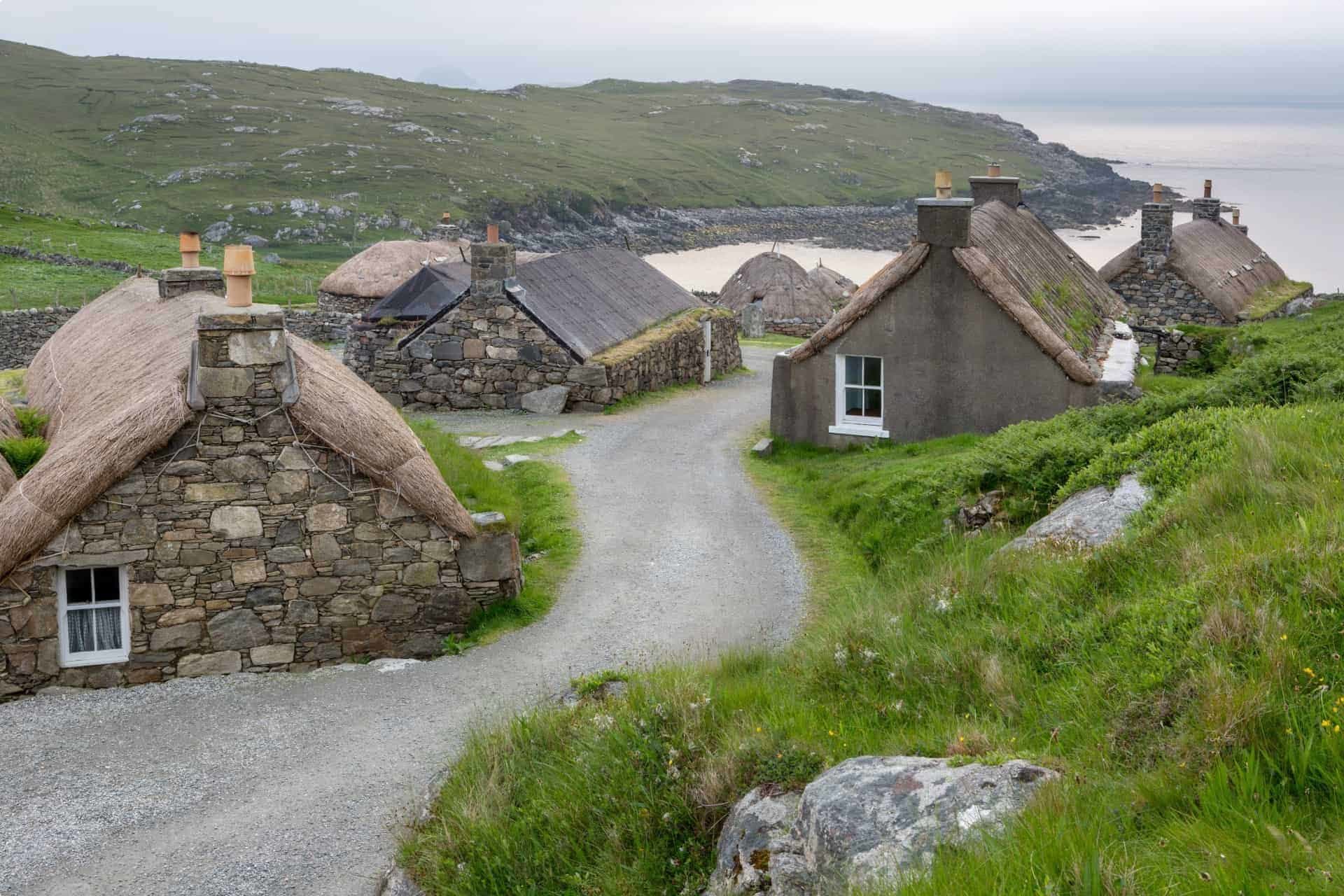
Isle of Harris
Lewis and Harris are often referred to as separate islands, however, technically, they are two parts of the main island of the Outer Hebrides. They are near-divided by deep intrusions of Lochs Seaforth and Resort, along with six miles of mountainous forest. Despite their proximity, they are home to distinct cultures and even dialects. Both Lewis and Harris derive their language from Norse ancestry, however fewer Norse words are used in Harris, and people speak with a softer lilt.
Like Lewis, industry in Harris is driven by crofting, weaving, fishing and knitting. The traditional way of life means that many young people must leave the island to find sufficient work. The landscape is stunning but harsh, made up mostly of gneiss rock that reveals itself even where marram grass has grown upon it. A common sight in Harris is the lazybed – strips of hand-built soil built onto the solid rock. During the twentieth century, these beds were used for growing potatoes and crops and stretched 500 feet up the hillside at some points. They are testament to the struggles faced by locals here, and their determination to make it work.

A land of extremes
Harris is a land of extremes: hard rock gives way to the low-lying machair, or fertile land that bursts into colourful flower in early summer. The perfume is so intense it is said to flavour the milk of grazing cattle. Soft, creamy-white beaches hug the western shores.
Harris is divided into North and South. The north is rugged and mountainous, while the south incorporates the eastern coastline, an area known as the Bays. Here, the gneiss rock is spattered with hundreds of small lochs, and boulders balance precariously upon hilltops. Like Lewis, Harris makes quite an impression on all who select an itinerary off the beaten track to the wild and untouched islands of the Outer Hebrides. More information on Harris can be found here. And the Western Islands Handbook by David Perrott is a fantastic resource for further detailed reading of the Scottish Isles.
Highlights of the Outer Hebrides
In addition to the capital Stornoway, Callanish, and the pristine beaches of the west coast, other highlights of this region include:
- The Arnol Blackhouse. Blackhouses refer to structures built with double walls of drystone, wooden rafters and thatched rooves. Historic blackhouses can be found across the Scottish Isles, but the best examples are in Lewis. Here, the harsh environment is reflected in the thicker walls and sloped roofs, where the strong winds demanded extra fortifications. Some blackhouses have been restored; the Arnol blackhouse now operates as a museum. Built in 1885 to house a family at one end and livestock at the other, this dwelling was quite miraculously occupied until 1964. Since this point, it is unchanged and very well preserved. Staff keep a peat fire burning inside and, without a chimney, the thick smoke billows slowly through the thatched roof and out the doors. It adds an air of authenticity, and highlights one of the possible sources of the name, blackhouse.
- Museum Nan Eilean. This is the museum located within Lews Castle: the product of a generous redevelopment in 2011. Exhibitions here celebrate local culture and at present, commemorate the loss of the ill-fated HMY Iolaire.
- Lovers of nature will be richly rewarded here in the Outer Hebrides, where seal colonies – both grey and cute dog-like common varieties – are established, and bird populations flourish. Look out for colonies of puffins or even Western Isles Otters who live happily in the sea around the islands . Keep an eye out for the bumble bee Bombus Jonellus var. Hebridensis, which is found nowhere else in the world. You are never far from the scenic woodlands or the misty and undulating peats of Lewis and Harris, and are everywhere reminded of the relationship forged between locals and nature.
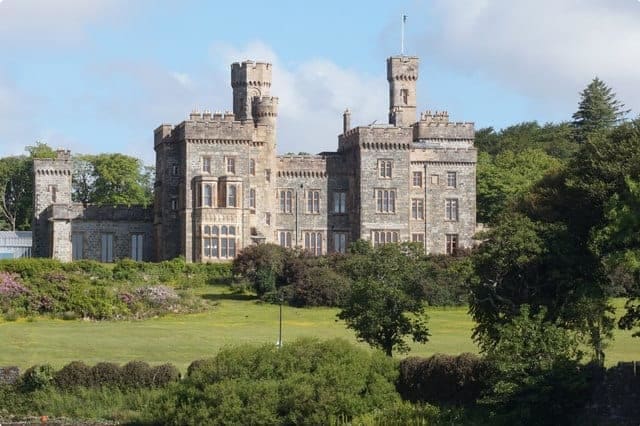
Discover the Outer Hebrides
There is no better way to discover the Outer Hebrides than on a guided, small-group tour. Odyssey Traveller offers a 20-day tour departing Glasgow, hopping islands as we circumnavigate the Scottish coastline from west to east. We spend time at Lewis and Harris, visiting key sites and monuments, and meeting local producers of cheese, smoked fish, and tweed. The standing stones of Callenish are also included on our Prehistoric Britain small group tour, where we move south through Scotland, England, and Wales to uncover the secrets of the past. Dawn at Stonehenge is a particular highlight of this specialty tour.
-
Links to external sites to learn more about visiting the Outer Hebrides
Outer Hebrides: A Travel Guide by Katie MacLeod storiesmysuitcasecouldtell.com
Enjoying the delights of our uninhabited islands – Scottish FieldGOLDEN EAGLES
Where can you see golden eagles in Scotland? | Wanderlust 5 Essential Tips: How to Spot Golden Eagles in Scotland … Where to See the Golden Eagle in the UK – Finding Nature UK Golden Eagle | Scottish Wildlife TrustEAST COAST
Hebrides | History, Facts, & Points of Interest | Britannica.com Scottish Islands including the Outer Hebrides or Western Isles of …STONE CIRCLE
Stone circle found in Outer Hebrides is 50 years older than … Fascinating: Origin stories of the Callanish Stones range from Druid …SCOTTISH ISLAND
Scottish Islands & Island Hopping Holidays | VisitScotland The Islands of Scotland and Top Scottish Island Destinations …Updated August 2021.
Related Tours
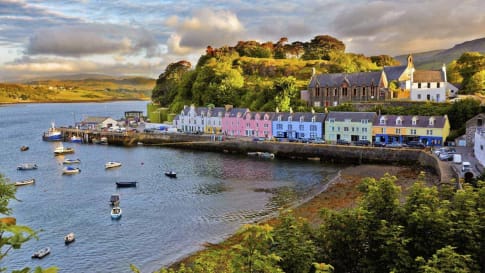
20 days
Jul, Sep, May, AugScottish Islands and Shetland small group tours for seniors
Visiting Scotland
An escorted small group tour for couples and solo travellers of the Scottish isles including the isle of Skye draws on local guides to share their knowledge of the destinations in this unique part of Scotland. UNESCO world heritage site are visited as breathtaking scenery and authentic experiences are shared in a group of like minded people on this guided tour of remote Scotland.
From A$16,695 AUD
View Tour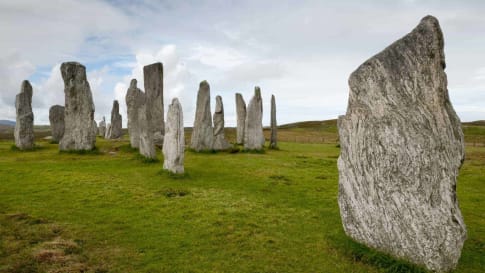
21 days
AugPrehistoric Britain small group history tour including standing stones
Visiting England, Scotland
This guided tour invites you to explore UNESCO World heritage sites at Skara Brae in the Orkneys, Isle of Skye, and Stonehenge in a prehistoric tour. This escorted tour has trips to key sites in Scotland, and the Irish sea in Wales such as Gower Peninsula and National Museum in Cardiff and England. Each day tour is supported by local guides.
From A$16,750 AUD
View Tour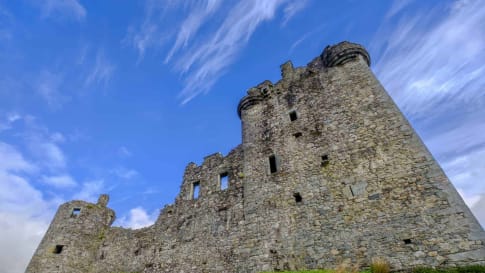
22 days
Jul, Sep, Jun, AugScotland small group tour | Tracing 5,000 years of history
Visiting Scotland
This guided tour of Scotland with a tour leader and local guides includes the isle of Skye, Orkney islands, the Scottish highlands with breathtaking scenery. Edinburgh including the royal mile, Palace of Holyroodhouse, Fort William, Urquhart castle, Stirling castle, loch lomond, Hadrians wall and New Lanark also a UNESCO World heritage site.
From A$15,995 AUD
View Tour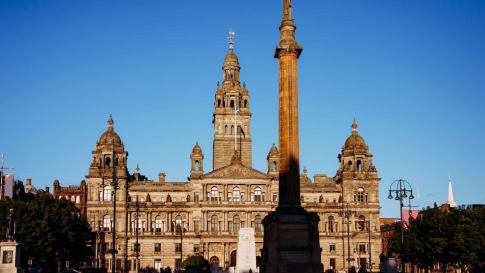
From A$13,915 AUD
View Tour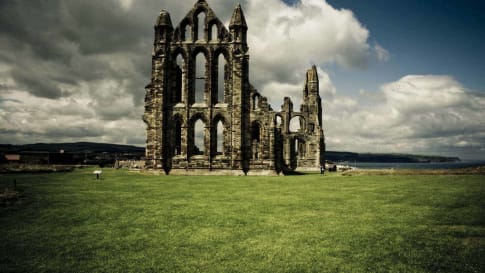
22 days
Sep, JunRural Britain | Walking Small Group Tour
Visiting England, Scotland
A walking tour into England, Scotland and Wales provides small group journeys with breathtaking scenery to destinations such as Snowdonia national park , the UNESCO world heritage site Hadrians wall and the lake district. each day tour provides authentic experiences often off the beaten path from our local guides.
From A$15,880 AUD
View Tour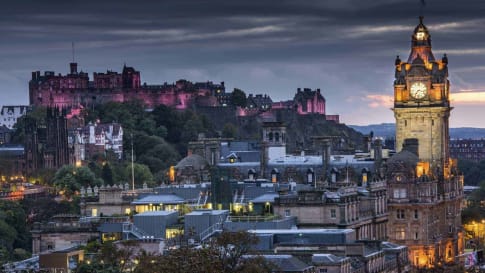
From A$15,995 AUD
View Tour
9 days
AugEdinburgh Festival Fringe Small Group Tour
Visiting Scotland
One of the few European tour companies to have in Scotland an escorted small group tour of Edinburgh during the fringe festival. As well attending performances, this trip includes time to experience, the old town, new town and the royal mile, a UNESCO world heritage site plus Edinburgh Castle and Palace of Holyroodhouse.
From A$6,875 AUD
View Tour

